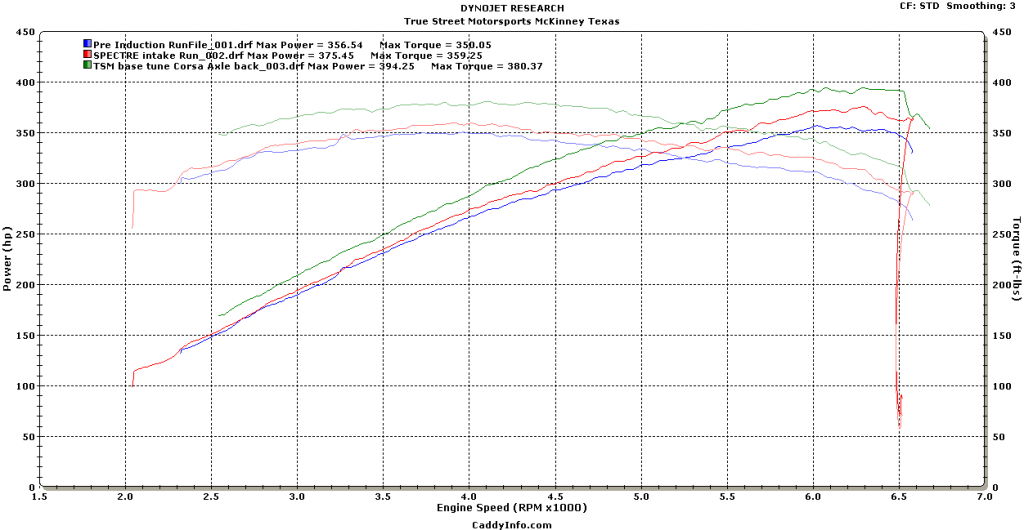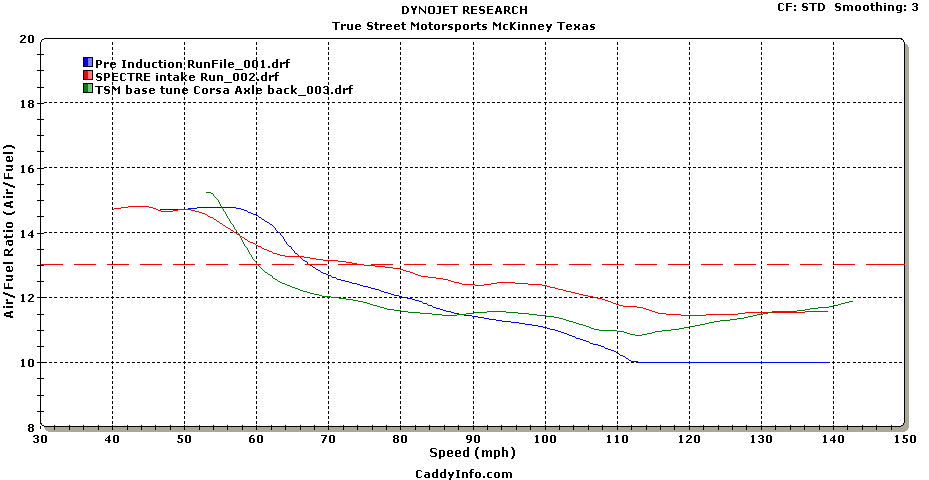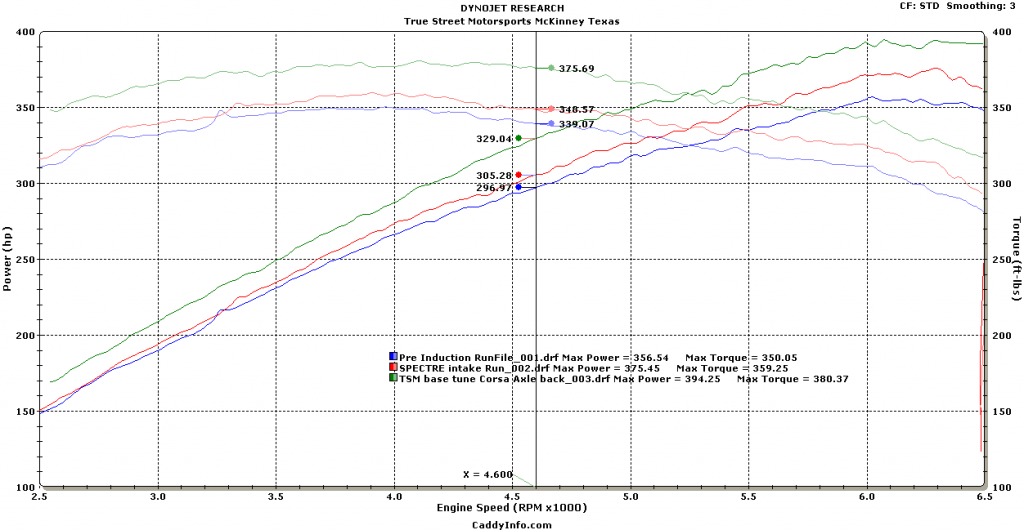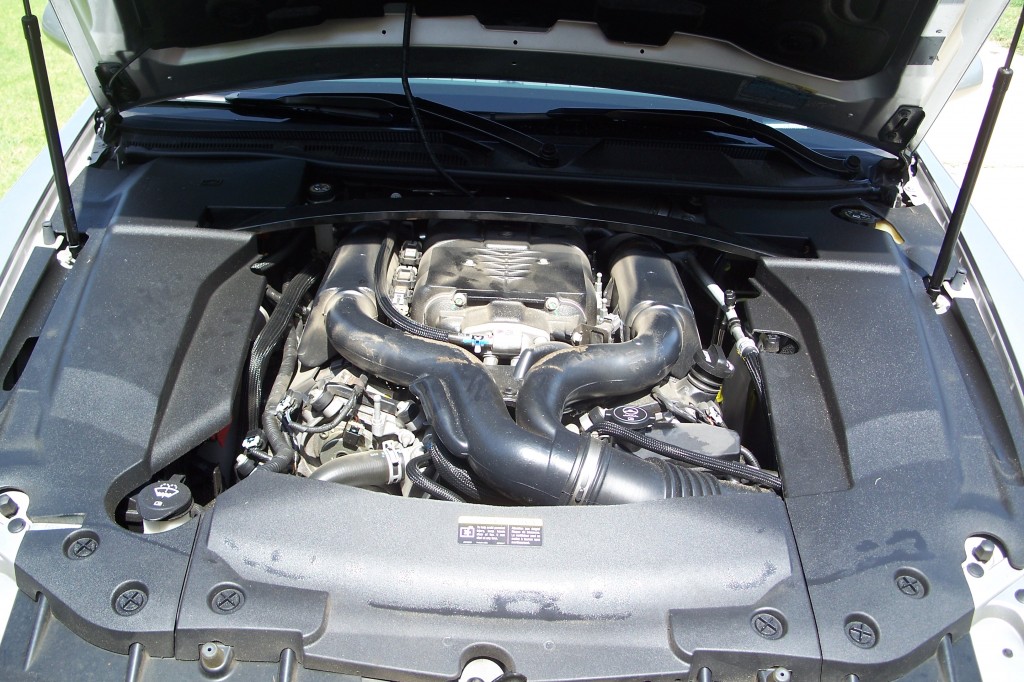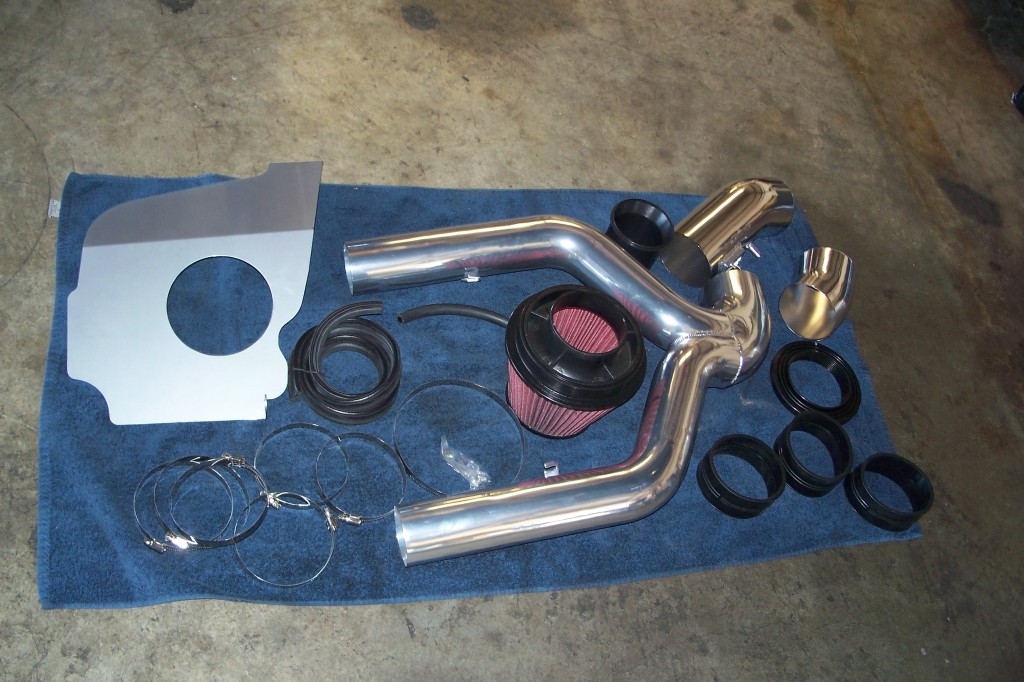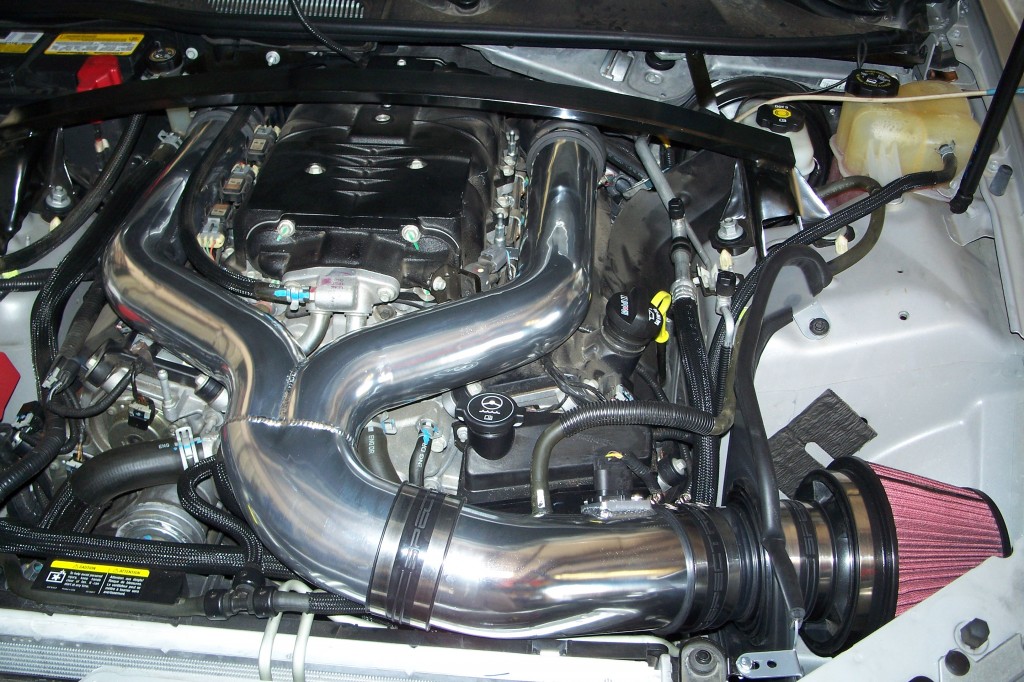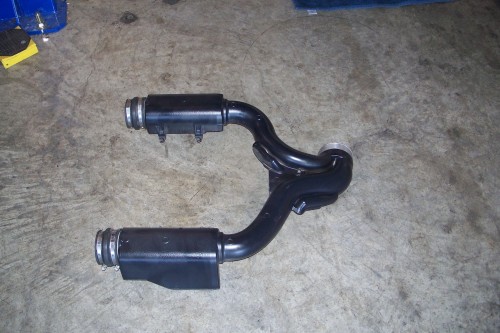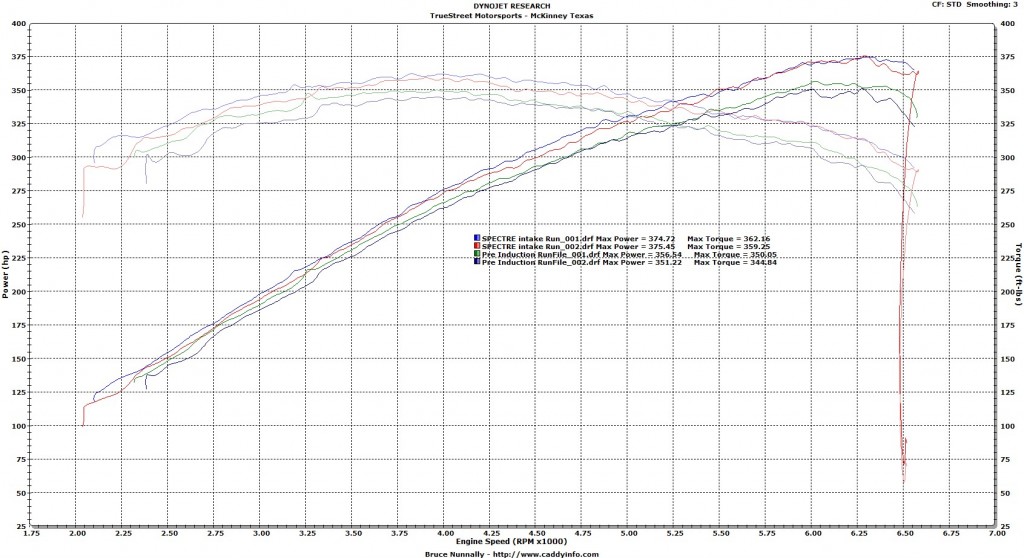Today I headed back to True Street Motorsports in McKinney Texas to get some dyno time in and check my air fuel ratios after the addition of the Corsa axle back exhaust. Click on the graph to zoom in, then hit back on your browser to get back.
Coincidentally, the Spectre Cold Air Intake (CAI) added 19 wheel horsepower (whp) over the baseline pre-Spectre CAI, and the Cora axle-back with the Spectre added another 19 whp for a total of 38 whp. The Corsa addition opened up a nice 20 ft lb of torque.
A dyno measures horsepower at the wheels, or whp. This is always less than the manufacturer’s advertised engine horsepower, or hp at the crank of the engine. WHP is hp after losses through the transmission and drivetrain. A reasonable figure for these losses on the STS-V’s 6L80e transmission is 20-24%. On my STS-V, the stock car was rated for 469 crank hp and made 356 whp on the dyno, or a 24% loss. if we use 22% as an average then the V originally made 456 hp stock. The addition of the Spectre got the car to 375 whp or +24 crank hp, and the addition of the Corsa with the Spectre CAI got the STS-V to 394 whp or +49 crank hp. Overall a nice gain for two easy bolt-ons, and the STS-V is now making 394 whp which at 20-24% losses equates to 492-518 hp at the crank.
Part of the point of the visit was to ensure the Air Fuel ratio was in the right range and stayed there throughout the Wide Open Throttle dyno run. The resulting fuel levels are safe and consistent with commanded.
This graph shows the same info zoomed in a bit and with a detail point showing that the new exhaust at key points actually adds +27 lb ft of torque:
I am close to my power goal of over 400 whp on the dyno at 394 whp. I want to run a new baseline on the dyno with the car cool and not heat-soaked for comparison. In fact, our 3rd run was at the same whp as the initial run today, but with the intercooler Intake Air Temp 2s (IAT2) hitting 150F+ due to the stress of repeat dyno runs on the original, stock intercooler cooling system. That suggests that the V may put down 400 whp when not heat soaked.
Fun day, and as always the True Street Motorsports team is easy to work with and helpful.

